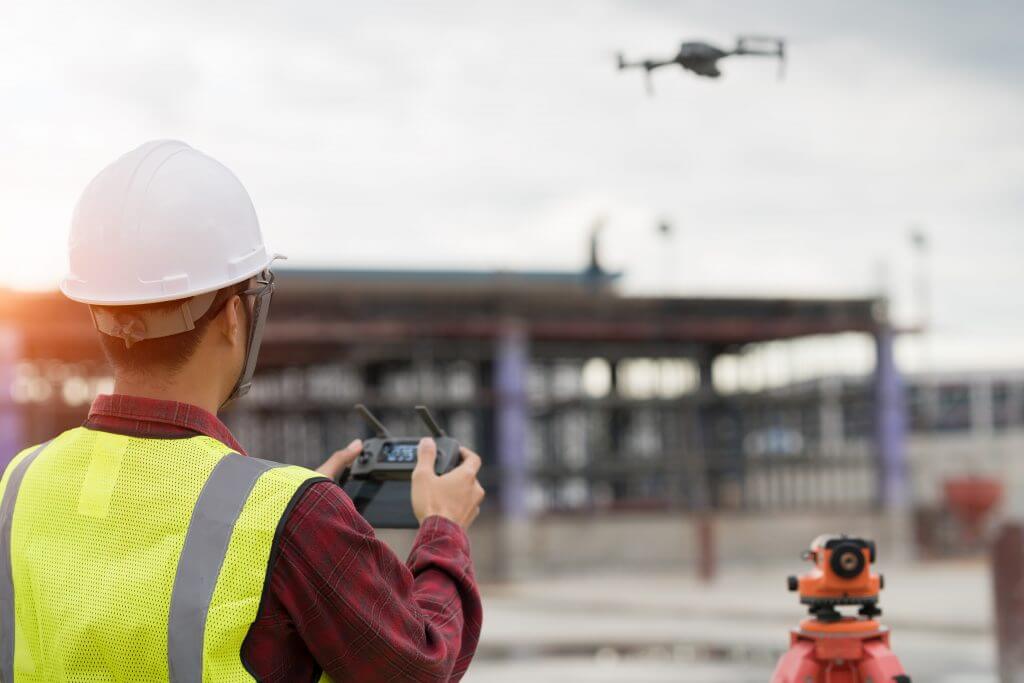Using Drones in Construction
Posted on July 22, 2019 by Ceco Building Systems
The most progressive companies in construction are embracing advances in technology of all types to improve work quality, communicate better with building owners, control risks, and gain a competitive advantage. This has certainly been true with the use of computers and information technology but it is also quite true of photography and video related technology, including on-site web-cams (internet linked cameras). In addition, the use of small flying drones (aka Unmanned Aerial Vehicles or UAVs) with cameras or other sensing devices has literally taken off (no pun intended) in the construction industry. In fact, one drone company reports that the construction industry is their biggest technology adopter logging a whopping 239 percent increase over last year! That’s notably more than other industries that are adopting the use of drones including mining, agriculture, surveying, and real estate.
According to a recent article in the online Dot-Dash publication “the balance”, there are at least six ways that owners, contractors, installers, and metal building manufacturers are benefiting from the use of drone technology as described below.
Land Surveying
UAVs have become a valuable way for land surveyors to capture and review information about topography, physical improvements, distance, and other information. In some cases drone / UAV use has become so popular that the classic expression “bird’s-eye view” has even been replaced with “drone’s-eye view.” Those using the technology report significant reductions in labor and time to capture data and produce accurate surveys. Further, because of the advanced technology used, a lot of human error can be overcome or eliminated.
Infrastructure Improvements
Using drones to locate and collect data on infrastructure can be particularly helpful on projects that cover large areas where the view from the ground is limited. In this way, they help provide superior levels of intelligence gathering on large job sites. Further, there are products available that are rugged enough to offer the superior endurance needed in these conditions. Having the use of drones available can allow contractors to make more ambitious bids and complete work in a more timely way.
Managing Communication
In addition to being able to capture information, drone technology can provide wireless, instant connectivity and communication on the job site. That means information can be provided in “real time” (i.e. at the same time the construction work is happening) without having to wait for any processing or other steps to be completed first. Having the ability to gather, manage, and report information 24/7 about current conditions to others off-site is also easily achieved providing a variety of benefits to the many different players in most construction projects.
Security Improvements
Drones that feature mounted cameras can use those cameras while in the air or even in stationary, parked positions to provide surveillance video of the project site. That allows companies to help protect against theft or vandalism as well as keep tabs on employees and other workers as they come and go.
Total Surveillance Freedom
The Federal Aviation Administration (FAA) currently regulates the use of drones and classifies different types. Most of the models used in construction meet the definition of a “Hobby Class” since they are generally under the 4.4-pound weight threshold and 400-foot travel radius defined by the FAA to meet that classification. As such, they are not subjected to the more stringent regulations of larger drones defined by other classes. Hence, these smaller, lighter drones can be flown almost anywhere for any reason.
Inspection and Transport
There are two other very helpful uses of unmanned drones in construction. One is the ability to send them into concealed spaces or other hazardous areas that present workplace safety concerns. By sending the drone instead, inspection information can be obtained without putting personnel in an unsafe situation. Second, a drone can be used as a means of transporting very lightweight items within or around a construction site. This might be helpful when workers on a roof, for example, need a quick, safe way to retrieve a paper document or a dropped piece of hardware or something similar.
If you or your company is looking for more ways to improve worker safety, project communication, job-site security, or better project management, then looking further into drones might be a good place to start. To find out more about this and other innovations in construction, contact your local Ceco representative.

